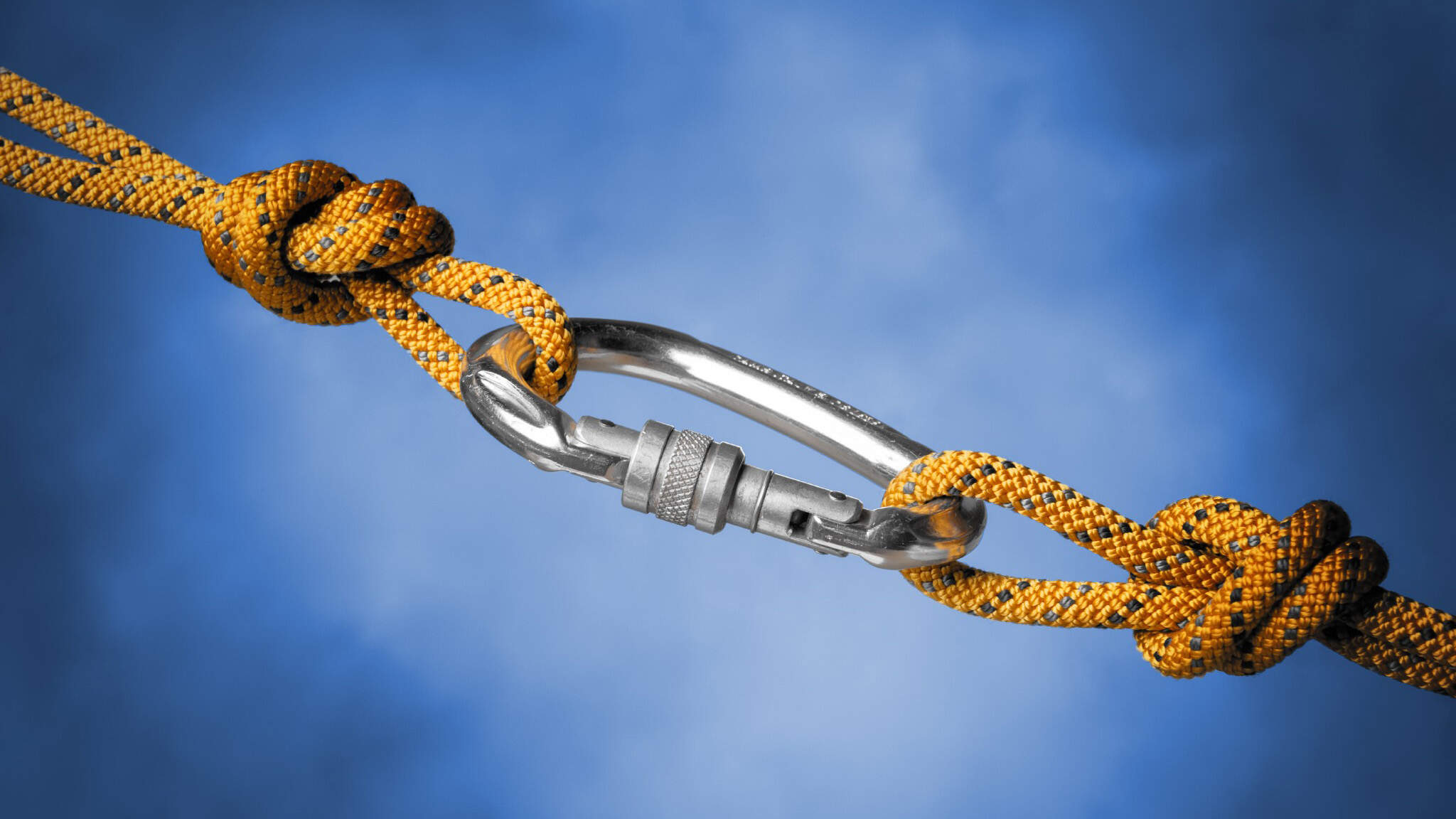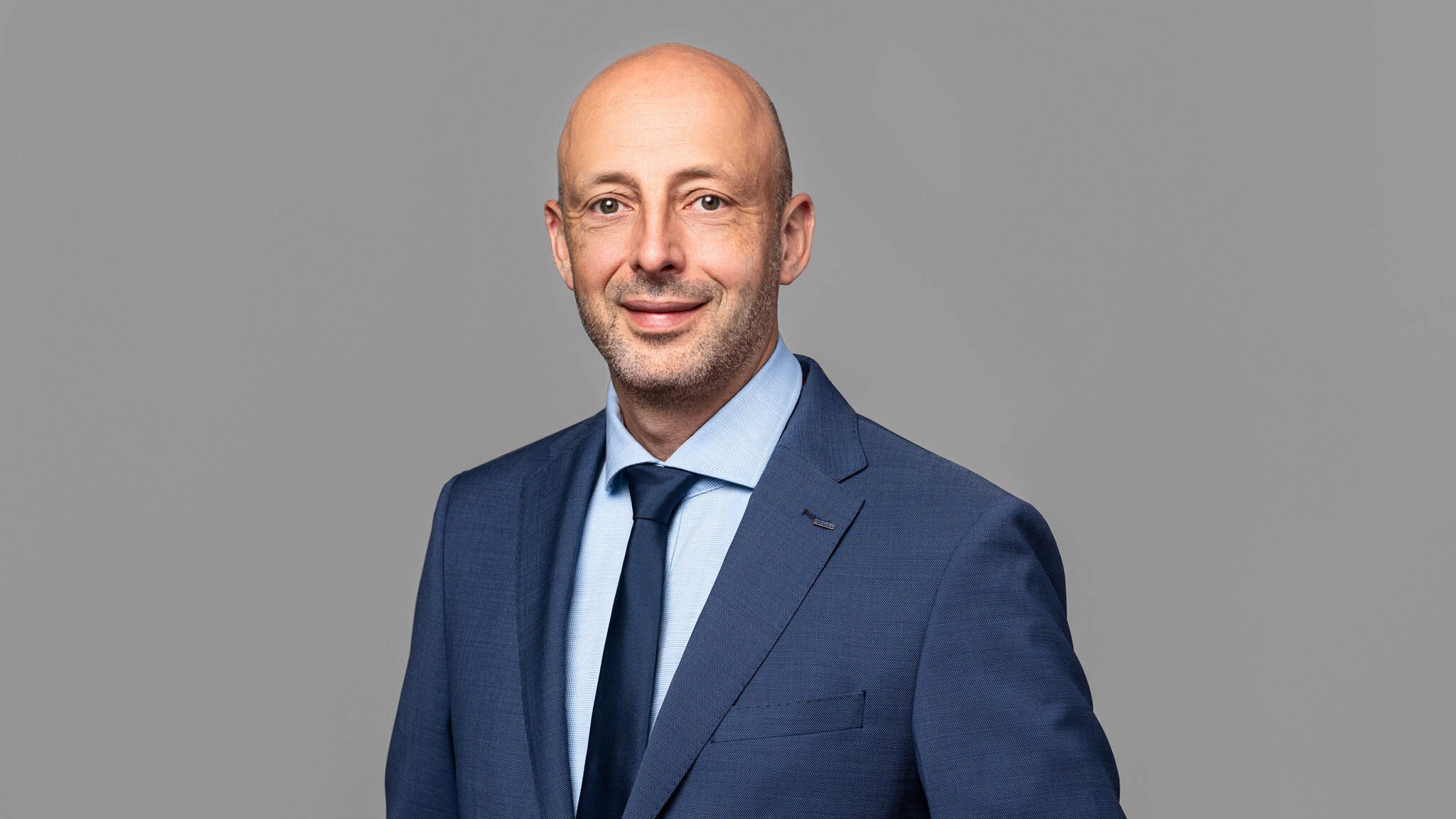Route to 2030: Strategies for challenging times
In the previous issue of the DACHSER magazine, we analyzed how global supply chains are changing as a new geopolitical and economic era dawns. So how must companies position themselves to ensure sustainable success—and what path has DACHSER chosen? We present a compass for the journey toward new horizons.

Suddenly everything changes. There’s a shift in the weather and the wind turns against you. The path to the summit is now steeper, rockier, and more arduous than before, like being tossed about in a stormy sea. Low clouds and patches of fog make it harder to see where you’re going. And to think that the journey had begun so well! You and your highly motivated team had set out under a magnificent sunny sky, drinking in each new view as you swiftly progressed upward. Everything was going according to plan and surpassing everyone’s expectations. Companies, too, can experience favorable conditions one minute and challenging times the next. Today, economists often describe this situation using the acronym VUCA: volatility, uncertainty, complexity, and ambiguity.
In 2023, VUCA will determine the pace and progress of business, trade, and logistics. What’s more, many changes are happening simultaneously and some are overlapping: digitalization and globalization are advancing, as are demographic change and global warming. The entire world is also still reeling from the effects of the pandemic, material and supply bottlenecks, and Russia’s war of aggression against Ukraine with all its human suffering and upheaval in global trade. Skyrocketing energy costs, inflation, and interest rate leaps are adding an extra layer to the situation, as are trade restrictions. Experts are already detecting a corresponding rethink when it comes to supply chains: there’s a move away from just-in-time processes—which aim to minimize costs while maximizing efficiency—and toward more resilience, for instance through dual sourcing and increased warehousing.
This complicated situation was clearly reflected in the economic forecasts heading into 2023. The International Monetary Fund (IMF) predicted that 2023 would be “a tough year” for the global economy. In an interview conducted at the beginning of the year with US broadcast network CBS, IMF Managing Director Kristalina Georgieva shared her continued concerns that half of EU countries and one-third of countries globally could drift into recession. Her reason: “Because the world’s most important economic areas—the US, the EU, and China—are weakening at the same time.”
There remains some question, however, as to whether the forecasts will come true. For better or worse, the pace at which reality catches up to—and often overtakes—the forecasts is increasing all the time. In February, the IMF raised its forecast for the global economy slightly and reported the “unexpectedly high resilience” of numerous national economies. Similarly, many experts assume that the global economy has already bottomed out and that the current trend may indeed turn around by the end of 2023 or the beginning of 2024. Welcome to the VUCA world! In the words often attributed to pioneering US computer scientist Alan Kay: “The best way to predict the future is to invent it.”
A glimpse of new horizons
So it’s less about gazing into crystal balls and more about seizing initiative and striking out toward a whole new world. This is a place in which each new leg of the journey broadens the horizon, and new departures appear along tried and true paths. DACHSER began this journey of transformation several years ago and has never wavered from this path—not even in times of crisis. “Our message to the market is crystal clear: DACHSER is a reliable partner—in good times, bad times, and even in times of uncertainty. We’re not a flag blown every which way by the wind; we hold steadfast to our chosen course,” says DACHSER CEO Burkhard Eling.
“Shaping real change,” he says, “requires a clear vision for the way ahead.” This is why DACHSER has created its target picture for 2030. “It tells us WHERE we want to be and its strategies outline HOW we’re going to get there by the end of this decade—through good times and bad.”
“We pay close attention to what our customers and our employees tell us so that we can understand their individual needs and work with them to develop the best solution going forward”, says Burkhard Eling, DACHSER CEO.
Now if you’re planning a vacation, deciding where to go is usually fairly simple: beautiful landscape, mountain retreat, or picture-perfect beach on an island paradise? The only limit is your imagination. But if you’re leading a company, there are much deeper questions to answer: What are the fundamental convictions and values that will guide the company on its journey into the future? What is the company’s purpose, and what are the parameters for measuring its success? What drives the company, its employees, but also its customers forward on their journeys? And how does the business model fare in a fast-changing environment?

Target picture for 2030
Each company must answer such questions for itself with respect to its market. An example of how this works is DACHSER’s target picture for 2030. In terms of market orientation, by the beginning of the next decade the family-owned company sees itself offering integrated logistics solutions as the world’s most digitalized logistics provider. It also plans to lead the market in both quality and service, for instance by offering tailored lead logistics provider (LLP) solutions that mean customers no longer have to manage the minutiae associated with service provider relationships. This is made possible by maintaining a well-balanced, robust network coupled with intelligent IT systems that are easy to integrate and that enable DACHSER to offer its customers worldwide this kind of comprehensive service.
The second area of focus in DACHSER’s target picture for 2030 is processes. Here, the logistics provider is encouraging end-to-end process thinking, expanding its range of standard services for carriers, and making its service partners a more integral part of the global DACHSER network than ever before. Given the greatly increased pace of digitalization and automation, DACHSER means to sustainably improve the efficiency, transparency, and response times of all processes along the supply chains.
The third part of DACHSER’s target picture for 2030 is all about people. Taking logistics as a cyber-socio-physical system, the family-owned company has made a clear commitment to multinationalism, diversity, and an employee-oriented culture with fast cycles of learning and decision-making.
“Our strengths are our people!” For DACHSER CEO Burkhard Eling, the human element is and will remain essential to logistics: “Above all, our strength lies in our network of people who share a passion for logistics. This is true at all levels, from management to trainees, administrative employees to logistics operatives and drivers—their collective knowledge and personalities are what enables us to perform so well.”
DACHSER’s shared corporate culture is fully embraced and lived, Eling says, providing orientation and extraordinary motivation on the journey toward 2030. “The knowledge surrounding this strong corporate culture creates a circle of loyalty. This feeling of belonging to the DACHSER family makes the company an enduringly stable and secure place of employment,” he adds.
Forward-looking strategies
Once on a journey, if you want to keep your far-off destinations in sight and be confident that you will ultimately reach them, you need a clear roadmap that also charts the milestones along the way. At DACHSER, these milestones are specified in strategic focus programs, which are integrated into day-to-day operations in a variety of ways. This lets everyone keep track of progress and changes at all times. It also creates trust in the company’s future, and provides a range of opportunities to identify with corporate goals and bring them to life.
To achieve its target picture for 2030, DACHSER has developed key strategies for its Road Logistics and Air & Sea Logistics business fields. The company has also devised a plan for networking these fields to create globally integrated end-to-end solutions. In addition, DACHSER uses its strategic focus programs to coordinate its efforts in digitalization and connectivity, sustainability and climate action, and people and corporate culture (more on this in the interview with DACHSER CEO Burkhard Eling).
DACHSER’s target picture for 2030 and the strategies that lead there are in step with the company’s long-term mission: “We create the world’s most intelligent combination and integration of logistical network services. We optimize the logistics balance sheet of our customers.” Eling believes this provides a reliable compass to guide DACHSER on its journey into the future. “By factoring in customer benefit along with core competencies, the DACHSER mission leads the way toward achieving a unique market position. Our aspiration is clear and simple: we want to be the market leader. This also means that we have to remain agile and flexible—even amid stormy seas or when the mountain peak disappears into a snowstorm—so we can continuously adapt to changing customer requirements, new logistics markets, the lack of qualified personnel, and geopolitical upheaval.”

Following the right course
What does all this mean as we move through the third decade of the 21st century? And to what extent can DACHSER’s chosen path set the tone for others? “We will be investing substantially in our network, our processes, and our workforce. This will allow us to maintain our high level of quality and remain a stable, reliable partner to our customers as we help them master their complex logistical challenges,” Eling says in describing the essence of DACHSER’s target picture for 2030. “As we navigate this VUCA world, our strategies put us in a position to quickly recognize changes at any time. And instead of merely reacting to them, we can use our innovative strength to transform them into a competitive advantage for our customers.” So it turns out that Austrian playwright Marie von Ebner-Eschenbach (1830–1916) was correct when she pointed out: “What we do today determines what the world will look like tomorrow.”
In the interview “Pulling together to master uncertainty”, DACHSER CEO Burkhard Eling talks in even greater detail about the DACHSER vision for logistics in 2030.
